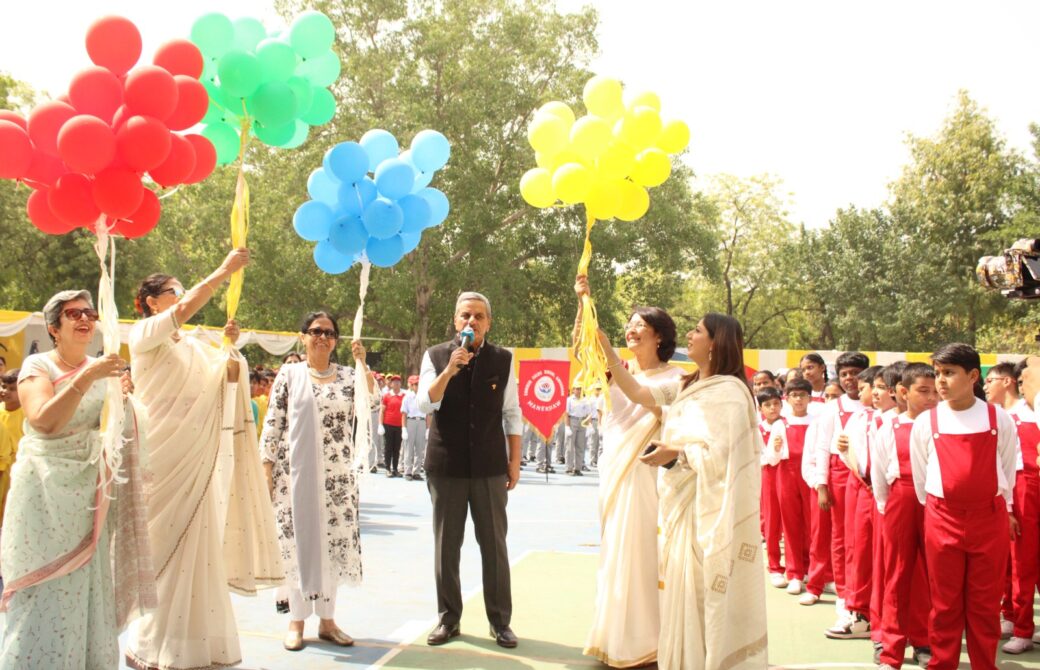Introduction:
In the modern era of education, pedagogy is not just about the delivery of content; it’s about how learning is structured, how students engage with that learning, and how they are guided toward developing critical thinking, creativity, and emotional intelligence. At Summer Fields, the Good Schools in Gurgaon, especially those in cities like Gurgaon, are not merely focused on traditional academic achievements but are increasingly adopting progressive, student-centric approaches that encourage holistic development.
When we talk about the pedagogical approaches of the best schools, we refer to the methods, strategies, and philosophies that these schools use to shape the learning experience. From integrating technology to adopting a child-centered approach, these schools are continuously evolving their teaching methods to ensure that students are prepared for the challenges of the future.
In this article, we will take a deep dive into the key pedagogical approaches used by the best schools in Gurgaon, focusing on what makes them stand out and how their methodologies help students develop not just academically but as well-rounded individuals ready to face the world.
About Us:
At Summer Fields School, we recognize that education is not just about textbooks—it’s about empowering students to grow into thoughtful, compassionate, and capable individuals. With over 35 years of experience, we’ve built a strong reputation for offering an inclusive, student-centric approach to education. Our teachers work alongside each child, encouraging them to explore, question, and learn in ways that foster both academic achievement and personal growth.
We provide a rich, supportive environment where every child’s talents can flourish. Through a balanced mix of academics, sports, arts, and community service, we help students develop the skills needed to thrive in a rapidly evolving world. At Summer Fields, we believe in developing the whole child, ensuring that their journey is both meaningful and transformative.
1. Student-Centered Learning
One of the most prominent pedagogical approaches adopted by the best schools is student-centered learning. This approach places the student at the heart of the learning process rather than the teacher. Instead of passively receiving information, students become active participants in their education. The teacher’s role shifts from being the sole disseminator of knowledge to a facilitator of learning.
In a student-centered classroom, students are encouraged to take responsibility for their own learning, ask questions, explore concepts independently, and collaborate with their peers. The learning environment is designed to be flexible and dynamic, where students can choose learning paths, engage in project-based activities, and pursue their own interests under the guidance of their teachers.
Benefits of Student-Centered Learning:
- Encourages independent thinking and problem-solving skills.
- Fosters collaboration and communication among students.
- Promotes a deeper understanding of concepts rather than rote memorization.
- Helps students develop skills that are valuable in real-life scenarios, such as critical thinking, creativity, and adaptability.
2. Inquiry-Based Learning (IBL)
Inquiry-Based Learning (IBL) is a method where students learn by exploring questions and problems rather than simply being given answers. In this approach, the teacher acts as a guide, helping students to inquire, research, and find solutions on their own.
IBL promotes curiosity, fosters independent research skills, and enhances problem-solving abilities. Rather than providing answers directly, teachers encourage students to ask meaningful questions and explore various avenues to find solutions. This method nurtures the skills of critical thinking, self-directed learning, and intellectual curiosity—all of which are essential in today’s information-driven world.
Benefits of Inquiry-Based Learning:
- Encourages students to be more inquisitive and engaged with the subject matter.
- Builds research and analytical skills.
- Makes learning more interactive and hands-on.
- Encourages deeper engagement and retention of knowledge.
3. Blended Learning: Combining Online and Offline Methods
In today’s digital age, blended learning has become an integral pedagogical approach. This method combines traditional face-to-face teaching with online learning resources and tools. It allows students to access a broader range of materials and learning experiences while benefiting from the guidance of experienced educators.
Blended learning incorporates a variety of technologies such as digital learning platforms, online assessments, and multimedia presentations to enhance the learning experience. This approach is particularly effective for fostering self-paced learning, where students can explore topics at their own speed, revisit challenging concepts, and deepen their understanding through interactive resources.
Benefits of Blended Learning:
- Provides a personalized learning experience for students.
- Enhances engagement through multimedia and interactive content.
- Offers flexibility, allowing students to learn at their own pace.
- Prepares students for future workplaces where digital literacy is crucial.
4. Project-Based Learning (PBL)
Project-Based Learning (PBL) is an experiential pedagogical approach in which students work on real-world projects over an extended period of time. This approach helps students make connections between academic concepts and practical applications. PBL encourages collaboration, problem-solving, and critical thinking, and often integrates multiple subjects into a single project.
Students in a PBL classroom might work on a project that involves research, design, presentation, and reflection. Whether it’s developing a community service project, creating a business plan, or building a model, students learn by doing. This hands-on approach helps them understand the importance of teamwork, project management, and real-world problem-solving.
Benefits of Project-Based Learning:
- Encourages real-world application of knowledge.
- Enhances collaboration and communication among students.
- Develops problem-solving skills and critical thinking.
- Prepares students for future careers by simulating real-world scenarios.
5. STEAM Education: Integrating Science, Technology, Engineering, Arts, and Mathematics
STEAM education is an interdisciplinary approach that integrates Science, Technology, Engineering, Arts, and Mathematics into one cohesive learning experience. This approach emphasizes creativity and innovation while fostering an understanding of how different subjects are interconnected. By integrating art and design with science and technology, STEAM education nurtures students’ creativity and develops their ability to think critically and innovate.
Top schools in Gurgaon are increasingly incorporating STEAM principles into their pedagogy by setting up specialized labs, organizing STEAM-based competitions, and providing access to tools like 3D printers, robotics kits, and coding platforms. The goal is to equip students with the skills needed to thrive in an increasingly technology-driven world.
Benefits of STEAM Education:
- Promotes creativity and innovation.
- Encourages critical thinking and problem-solving.
- Prepares students for future careers in fields like technology, engineering, and design.
- Fosters an interdisciplinary approach to learning.
6. Differentiated Instruction: Meeting the Needs of Every Student
Differentiated instruction is a pedagogical approach where teachers adapt their teaching methods and content to meet the diverse needs of their students. Since every student has different learning styles, strengths, and challenges, a one-size-fits-all approach to teaching can be ineffective. Instead, differentiated instruction tailors learning experiences to accommodate individual needs, whether students require enrichment, additional support, or a different learning style.
In a differentiated classroom, teachers may provide multiple ways for students to engage with content, including visual aids, hands-on activities, and alternative assessments. This approach helps ensure that all students are engaged and challenged at the appropriate level.
Benefits of Differentiated Instruction:
- Ensures that all students receive the support they need to succeed.
- Promotes inclusivity and helps meet the needs of diverse learners.
- Enhances engagement by offering multiple pathways for learning.
- Encourages a growth mindset by ensuring every student has access to challenges that match their abilities.
7. Flipped Classroom: Reversing Traditional Learning
The flipped classroom approach reverses the traditional model of education. Instead of learning new content during class time and doing homework afterward, students are introduced to new material at home through online resources, videos, or reading assignments. Class time is then devoted to applying what students have learned through interactive activities, discussions, and problem-solving exercises.
The flipped classroom model allows teachers to spend more time providing personalized support and guidance, while students have the flexibility to learn at their own pace outside of class. This approach promotes active learning and allows students to engage with material more deeply and meaningfully.
Benefits of Flipped Classroom:
- Increases student engagement by encouraging active learning.
- Allows for more personalized support during class time.
- Provides flexibility for students to learn at their own pace.
- Encourages deeper understanding through collaborative work and application.
8. Social and Emotional Learning (SEL)
Social and Emotional Learning (SEL) focuses on helping students develop emotional intelligence, self-awareness, and interpersonal skills. It involves teaching students how to manage emotions, set and achieve goals, show empathy, and resolve conflicts. SEL is integrated into the curriculum through activities like group discussions, role-playing, mindfulness exercises, and community-building activities.
By incorporating SEL into their pedagogical approach, schools help students develop the emotional and social skills needed to navigate the challenges of both academic and personal life. This approach fosters a positive, supportive learning environment where students can thrive emotionally and socially.
Benefits of Social and Emotional Learning:
- Enhances emotional intelligence and self-awareness.
- Encourages empathy and positive relationships.
- Improves conflict resolution and stress management.
- Helps students become more resilient and adaptable.
Conclusion:
The pedagogical approaches employed by the best schools are designed to ensure that students not only excel academically but also grow emotionally, socially, and creatively. At Summer Fields, the Best Schools in Gurugram where by adopting innovative, student-centered learning strategies, integrating technology, and focusing on holistic development, these schools provide a learning environment that prepares students for the challenges of the modern world.
From inquiry-based learning and project-based learning to STEAM education and social-emotional learning, the best schools are continuously evolving to meet the needs of their students. These schools recognize that education is not just about imparting knowledge—it’s about developing the skills, attitudes, and mindsets that will enable students to succeed in an ever-changing world. With a focus on individualized attention, creativity, critical thinking, and emotional growth, these schools are shaping the future leaders, innovators, and problem-solvers of tomorrow.









